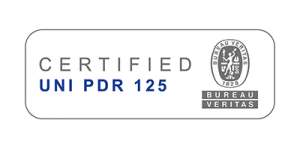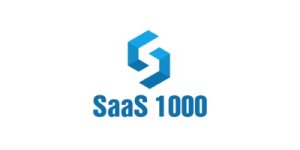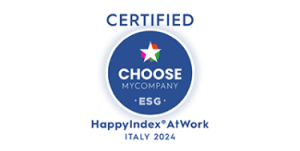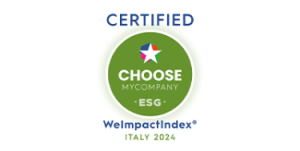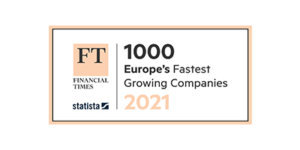
Building our own leadership model
It seems like yesterday, and yet over two years have passed since the People & Culture (P&C) structure presented its Vision to the whole MailUp Group organisation:
Contributing in the creation of value and in the organisation’s development by creating an environment that promotes merit, people development and wellness in line with company values.
Participating in the definition of business strategies through the construction, sharing and implementation of innovative policies of people management and organisational change.
The vision is as ambitious as MailUp Group’s path itself. Since 2002, starting from a local web agency, we have reached important milestones in terms of turnover and acquisitions, becoming an international group of almost 300 people in 5 countries in the world.
In this context, the P&C structure was born from a specific business need: to start a change management process accompanied by the implementation of the main HR processes.
Furthermore, in a digital-first sector, it was necessary to adopt a more technological and innovative approach starting from people’s needs and from the awareness of how digital skills can support business growth.
From this vision, in January 2018 we defined a People Strategy, identifying the priorities to be implemented in the following three years. In two years, we have managed to build an organisational culture based on trust, accountability and continuous feedback.
A cultural shift
Now, in the third year of the programme, we have reached a crucial stage. The continuous growth now places the Group in front of an even more ambitious challenge: the transition from an entrepreneurial to a managerial mindset.
In order to achieve this goal, acquisitions and revenues are not enough. If we want to keep being competitive on the market, we need leaders who are aware of their professional and personal purpose, who work together for a common goal and, in the long term, build a solid, sustainable business.
In this context we started the Leadership Model Project. Before diving into the details of the project, we need to spend a few words on the meaning of the word “leadership” itself.
What is leadership?
Leadership is a staple of organisational studies, so much so that R. Stogdill stated that “There are almost as many different definitions of leadership as there are people who have tried to define it” (Personal factors associated with leadership: A survey of the literature, The Journal of Psychology, 1948), underlining how this term brings with it an intrinsically subjective content.
As MailUp Group, we have embraced the school of thought identifying leadership as the ability to guide other people, not so much thanks to an institutional or socially recognised role, but rather thanks to charisma, long-term strategic vision and an innate or acquired ability to create a shared ethical proposal. Within an organisation, these skills are expressed by being able to lead a team towards a greater goal – the corporate one – and to motivate people to give their best.
These qualities are important in any business context, no matter its industry, corporate culture or management style. However, they is even more crucial in contexts where economic value is a direct function of personal skills, ingenuity, talent and individual will to put everything at the service of the company.
Our corporate vision is “to be an internationally recognised innovator where passionate people create an ecosystem of data-driven solutions that help with the evolving ways of communicating with customers”. In order to be innovators, we must take alternative, untrodden, sometimes risky paths. We can do so only by leveraging the greatest resource of all – people.
Defining a new leadership model
If leadership is defined in many ways, so is a Leadership Model. In a very general way we can define it as an aspirational model, composed of a series of values, behaviours and skills required of people who have a leading role in the organisational context.
There is certainly no shortage of models out there to be inspired by. A very popular choice, especially among companies in the digital sector, is provided by the so called transformational model. According to it, the key element of a leader is provided by his/her coaching role: leveraging on motivation, this leads to define goals that transcend personal interests and are aimed at achievement of the common good.
Each company designs its model according to the objectives of the model itself. Our model was conceived as a tool to spread the corporate culture at all organisational levels through People Managers and as a yardstick for evaluating today’s and tomorrow’s People Managers’ performance.
As a consequence, we decided not to stick to a traditional model, in the belief that motivation is intrinsic in everyone and each person pursues their own interests. Therefore, a leadership model isn’t meant to spark motivation but rather to enhance it and guide it towards common goals. We also decided not to rely on best practices – we believe that people are wonderfully different, and relying on universally virtuous practices is not the right way to make such differences stand out.
Our path toward a new leadership model
With these premises, and with a lot of courage – but we are innovators and we are are used to explore the less beaten paths – in March we began to study the business units within our Group, their history and their artifacts, through interviews with their Top Managers.
We asked them to tell us about their experience as a manager and to expose what they were, according to their personal point of view, the most important traits that a People Manager should have.
Having collected this precious information, we rationalised it, categorised it and inserted it into a matrix. This matrix is the frame of reference of the process, a snapshot of what our Top Management expects from its Managers.
We framed that snapshot and carried on in our research. We fished the web in search of other companies’ models, deep dived into academic articles on leadership styles, focused on motivational theories, researched needs in relation generations. Even more, we asked the opinion of several experts on the topic, both in the academia and in consultancy companies, as well as from HR departments of other companies.
A most significant contribution was given by Prof. Luca Solari of the University of Milan, who walked us through a new approach, not yet fully developed in the academia nor widely used by organisations – purpose-driven leadership.
That meeting prompted new research – we found an interesting read in a graduate thesis entitled “Archetypal Leadership: the interpretation of hierarchy in organizations”, by O. Rossi, who in 2014 identified leadership as a synthesis between the individual and the collective objective. O. Rossi conducted an in-depth analysis on the topics, which can be found in this article.
Thus far we had focused on how managers could carry out their activities – and yet, motivation does not correspond to a method, but rather to the purpose of the action itself.
The project levels
We therefore reviewed our model definition process and devised a three-level process:
- Investigation into the methods of actions, through interviews with Top Management (top down action)
- Investigation into the purpose of actions, through a dedicated workshop with all People Managers (at level action)
- Investigation into the expectations of actions, through a survey to the entire corporate population (bottom up action)
The first level/phase ended this past April. The second phase, with 10 two-hour workshop sessions, will start at the end of May and will cover the whole month of June. At the same time, in June, the survey data will be collected.
The first and third phases refer to a traditional modus operandi, while the second phase is by far the most interesting due to its extremely innovative approach.
The Purpose Driven Leadership workshops will be delivered using a remote board and will involve the recipients of the model itself – People Managers.
The goal is prompt and support reflection on personal “purposes” and business objectives, with the objective of reconciling them.
Purpose Driven Leadership
But what is “purpose”? According to N. Craig and S. Snook, “Purpose is definitely not some jargon-filled catch-all […]. It should be specific and personal, resonating with you and you alone. It doesn’t have to be aspirational or cause-based […]. And it’s not what you think it should be. It’s who you can’t help being. In fact, it might not necessarily be all that flattering”.
It is a very intense definition of purpose, that allows to understand how deeply linked purpose is to the meaning that each of us gives to our existence.
Why focus on the interlink between purpose and business objectives? Because, as K. Lewin suggests, individuals use the organisation to achieve their own individual goals (think also of the need for self-esteem identified by A. Maslow as the apical point of his pyramid of needs). At the same time, the organisation exploits individual tension and conveys its energy towards corporate objectives and sub-objectives. The contact point between the two paths is crucial and is expressed precisely through leadership.
Wrap up
When aware of the above and guided by a model that interlinks objectives rather than being a utopia, People Managers can be more motivated, goal focused, open to and instruments of innovation – a distinctive element of the MailUp Group.
In the coming months, we will report on the implementation of the mentioned work phases while accounting for the progress of the project.
May 12th, 2022 – Update : project completed.
—-
Articolo di Sara Parroco
People Development Specialist, MailUp Group


